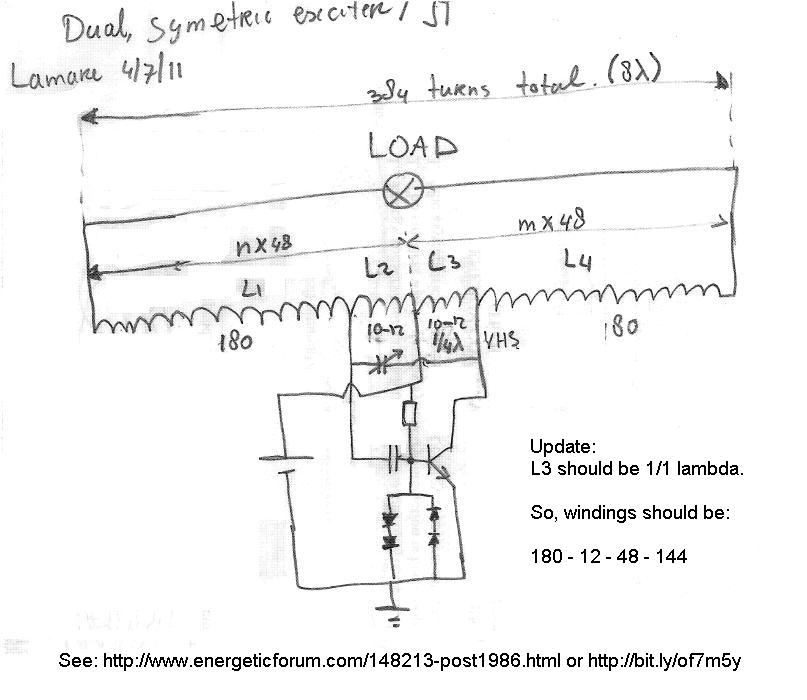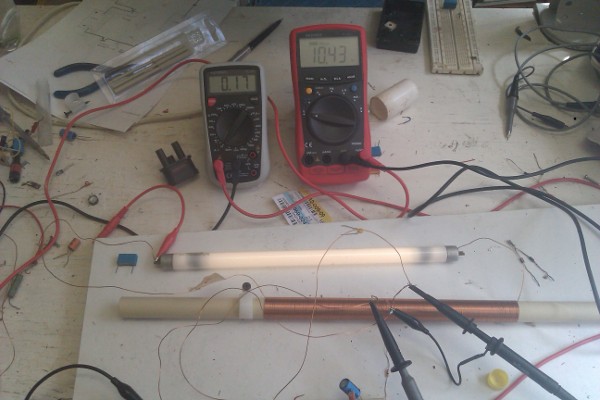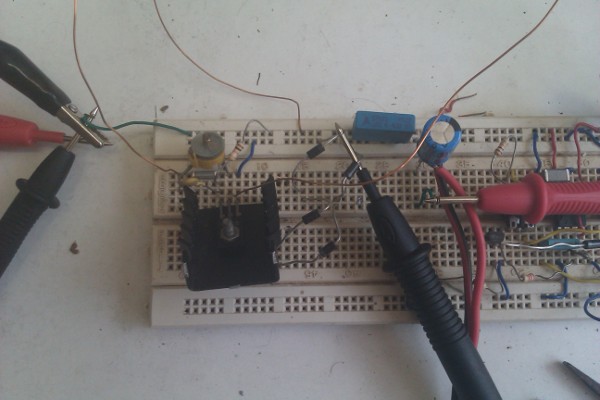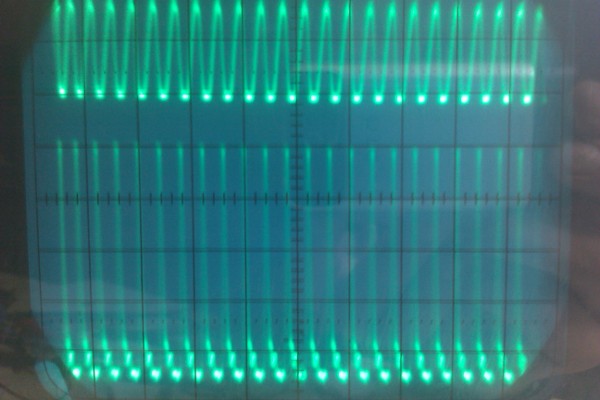@dR-Green.Hi I re-read my previous post and can see that i am only adding to the confusion.Try this.Get a 2' lengh of 0.6mm maplins bell wire and fold it in half so you have two wires.Wrap these two wires 5 times around your cfl toroid.Cut the wire at the fold and connect one of the cut ends to one of the starting wires so it is end of coil to start of coil.This will be your Battery + connection.
I re-read my previous post and can see that i am only adding to the confusion.Try this.Get a 2' lengh of 0.6mm maplins bell wire and fold it in half so you have two wires.Wrap these two wires 5 times around your cfl toroid.Cut the wire at the fold and connect one of the cut ends to one of the starting wires so it is end of coil to start of coil.This will be your Battery + connection.
I just did this with another cfl torroid and it worked so hopefully yours will too.
Here is a good joulethief tutorial which may make thing clearer.
The Joule Thief!
I think the output voltages of the simple sec and joulethief exciter circuits would be comparable.
I have had a circuit for a trigger coil led driver sitting on a breadboard for months now and you may find it useful.Here is a circuit diagram and vid.It will run down to 0.3v and you can use high input voltages on it too so quite versitile and a good joulethief alternative for a torch.Happy experimenting.Jonny
‪Led driver‬‏ - YouTube

 I re-read my previous post and can see that i am only adding to the confusion.Try this.Get a 2' lengh of 0.6mm maplins bell wire and fold it in half so you have two wires.Wrap these two wires 5 times around your cfl toroid.Cut the wire at the fold and connect one of the cut ends to one of the starting wires so it is end of coil to start of coil.This will be your Battery + connection.
I re-read my previous post and can see that i am only adding to the confusion.Try this.Get a 2' lengh of 0.6mm maplins bell wire and fold it in half so you have two wires.Wrap these two wires 5 times around your cfl toroid.Cut the wire at the fold and connect one of the cut ends to one of the starting wires so it is end of coil to start of coil.This will be your Battery + connection.I just did this with another cfl torroid and it worked so hopefully yours will too.
Here is a good joulethief tutorial which may make thing clearer.
The Joule Thief!
I think the output voltages of the simple sec and joulethief exciter circuits would be comparable.
I have had a circuit for a trigger coil led driver sitting on a breadboard for months now and you may find it useful.Here is a circuit diagram and vid.It will run down to 0.3v and you can use high input voltages on it too so quite versitile and a good joulethief alternative for a torch.Happy experimenting.Jonny
‪Led driver‬‏ - YouTube

 Thanks for all your help so far.
Thanks for all your help so far. If it's not, well I'll get back to you lol. Thanks
If it's not, well I'll get back to you lol. Thanks  It was just a matter of swapping the trigger polarity, and the stupid thing is I automatically did that without even thinking about it to get it work as an SG
It was just a matter of swapping the trigger polarity, and the stupid thing is I automatically did that without even thinking about it to get it work as an SG  Oh well.
Oh well. 










Comment